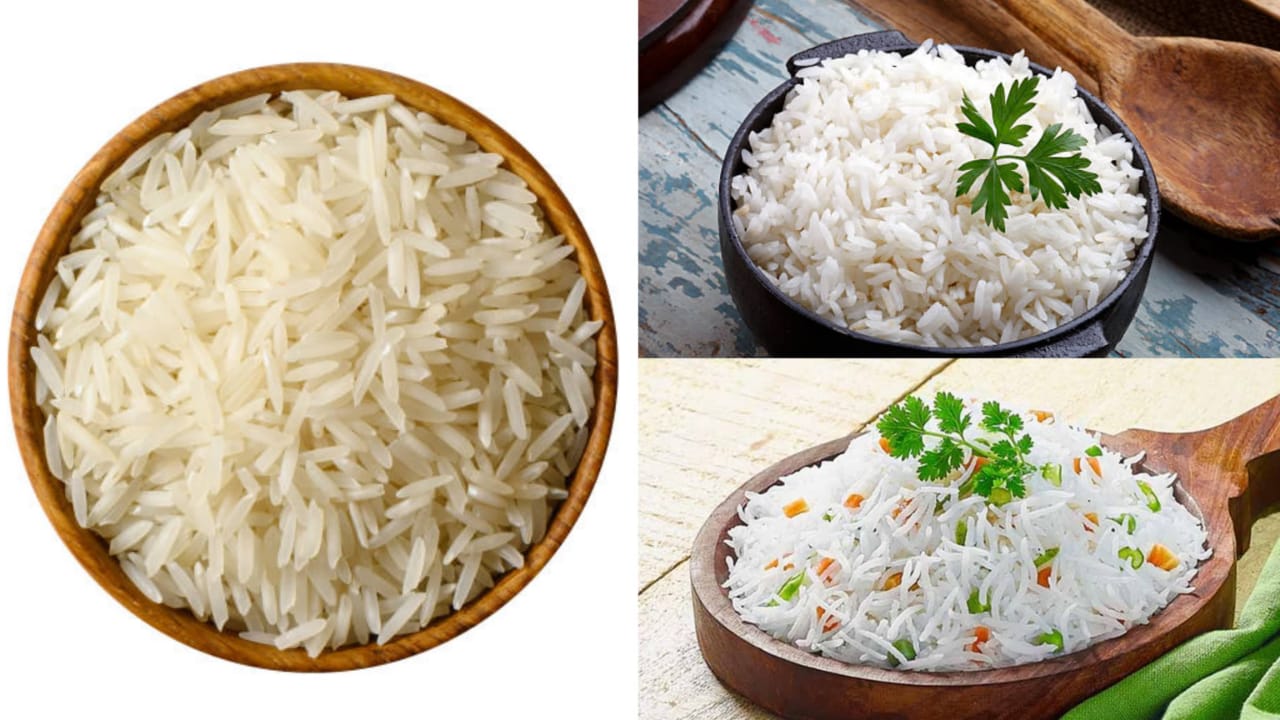Can eating Basmati rice reduce the risk of diabetes by 10%? Learn the secret!
Can eating Basmati rice reduce the risk of diabetes by 10%? Learn the secret! Basmati rice is not just a food grain, but an integral part of the culture, tradition, and diet of the Indian subcontinent. Its long, slender grains, captivating aroma, and tenderness after cooking have made it the king of rice across the world. Whenever we think of biryani, pulao, or payasam for a festival or special occasion, the image of Basmati rice comes to mind. However, its popularity isn’t limited to its taste and aroma; its nutritional value and health benefits also make it unique. Let’s learn more about Basmati rice today. Introduction The word Basmati comes from the Hindi word ‘basmati,’ meaning “fragrance.” The authenticity of this name is proven by its extraordinary natural aroma, which originates from a chemical compound called 2-acetyl-1-pyrroline. This rice has been cultivated for thousands of years in parts of India and Pakistan, located in the Himalayan foothills. Its unique geographical location, climate, and cultivation methods influence its quality. After ripening, its grains become almost twice as long, but do not stick together, making it distinct from other rice. Its demand worldwide is so high that it is one of India’s major exporters. 1. Types and Cultivation of Basmati Rice Basmati rice comes in two main types: white basmati and brown basmati. White basmati:- This is the most common. In this rice, the husk, bran, and germ are completely removed. As a result, the rice appears white and smooth and takes less time to cook. Brown basmati:- This rice is milled in which only the hard outer hull is removed, leaving the husk and germ. As a result, the rice is brown in color. It contains much more fiber, vitamins, and minerals than white rice. Several improved varieties of Basmati rice are grown in India, such as Pusha Basmati-1121 (the world’s longest rice grain), Pusha Basmati-1, Ranbir Basmati, and Dehradun Basmati. Cultivation:- Basmati rice requires a specific climate and environment. It is cultivated primarily during the rainy season. After planting, the crop takes approximately 3-4 months to mature. After harvesting, the rice is stored for at least 6 months to a year or more. This process reduces the moisture content in the rice, keeping the rice grains crisp and crisp during cooking, and enhancing its aroma. 2. Suitable Soil Choosing the right soil is crucial for successful Basmati rice cultivation. Generally, heavy loam or clay loam soil with good drainage is ideal for Basmati cultivation. The soil’s pH level should be between 5.5 and 7.5. This type of soil helps retain water and nutrients, which aids plant growth and plays a vital role in improving the quality of the rice, especially its aroma and flavor. 3. Nutritional Value and Health Aspects of Basmati Rice Basmati rice is not only the best in taste and aroma, its nutritional value is also extraordinary. Why it is beneficial for the common man is discussed in detail below. Nutritional list (Approximate per 100 grams of cooked white basmati rice): Calories:- About 130-150 kilocalories. Carbohydrates:- 28-32 grams (main source of energy for the body). Protein:- 3-4 grams. Fat:- Less than 0.5 grams. Fiber:- 0.5-1 grams (its amount is about 3-4 times more in brown basmati).Vitamins: – It contains important vitamin B complex like thiamine (vitamin B1) and niacin (vitamin B3), which help us convert food into energy. Minerals:- It contains essential minerals like selenium, magnesium and manganese. Magnesium is beneficial for bones and nervous system, while selenium is a powerful antioxidant. Health Benefits: Relatively good for diabetics:- Basmati rice has a relatively low glycemic index (GI) compared to white rice (between 50-58). The glycemic index is a measure of how quickly a food can increase blood sugar levels. Foods with a low GI release sugar into the blood slowly, so blood sugar does not increase suddenly. Therefore, diabetics can eat basmati rice in moderation (of course, as per the doctor’s advice). Good for the heart:- Brown basmati rice contains a lot of fiber. This fiber helps reduce the level of bad cholesterol (LDL) in the blood and reduces the risk of heart disease. In addition, the magnesium in it helps control blood pressure. Aids in Digestion:- The fiber in brown basmati improves digestion and helps in relieving problems like constipation. It also helps in the growth of good bacteria in the gut. Helps in Weight Management:- The presence of fiber helps in keeping the stomach full for a longer period, which reduces the tendency to eat repeatedly. This makes it easier to control weight. Gluten-Free:- Basmati rice is a safe and healthy option for those who are gluten sensitive or suffer from celiac disease. Low in Arsenic:- Compared to many other rices, basmati rice has been found to have lower levels of arsenic, which is a heavy metal and harmful to the body. 4. Economic Importance India produces about 70% of the world’s total basmati rice production and it is one of India’s major agricultural exports. Every year, India exports millions of tons of basmati rice to countries like the Middle East, Europe and America, earning a huge amount of foreign exchange. Its premium quality also commands a high price in the international market. Millions of farmers and workers earn their living by cultivating, processing and exporting this rice. 5. Culture and Tradition In the Indian subcontinent, Basmati rice is not just a food, it is a symbol of celebration and nobility. A feast is incomplete without biryani or pulao at weddings, Eids, pujas or any social event. From the kitchens of Mughal emperors to the special occasions of the common man today, Basmati has retained its royal place. Its aroma creates a festive atmosphere. 6. Challenges and Future There are several challenges in cultivating Basmati rice. Climate change, water scarcity, disease and insect attacks hinder its production. Apart from this, the presence of fake or adulterated Basmati rice in the market is also a big problem, which tarnishes the reputation of genuine rice. In … Read more

